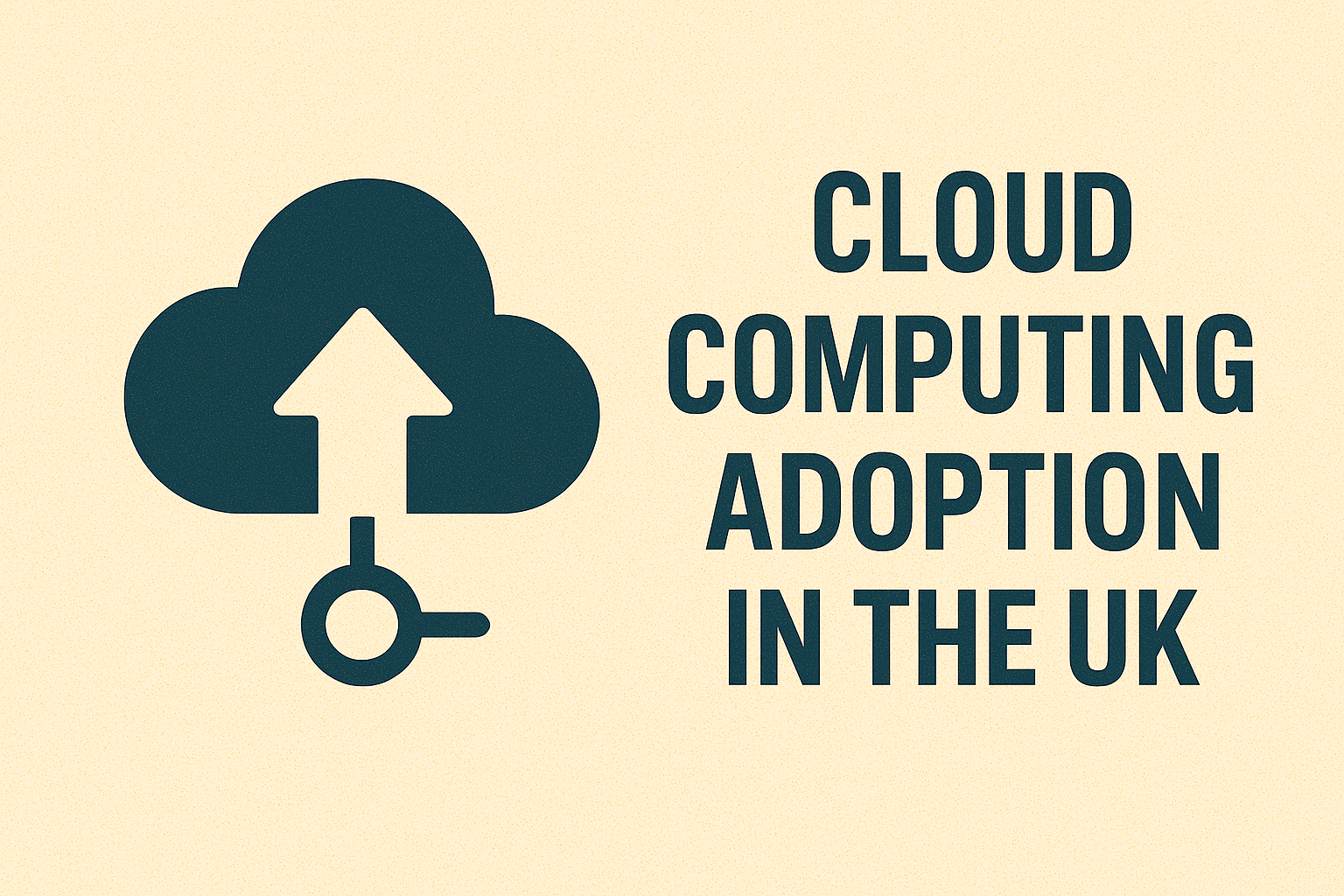Your cart is currently empty!
Cloud Computing Adoption: Migration of Financial Services

Cloud computing adoption is transforming the landscape of financial services and business operations across the UK and Europe. From retail banking to capital markets and insurance, financial institutions are increasingly migrating to cloud platforms to enhance agility, improve efficiency, and drive innovation. With regulatory clarity improving and digital transformation becoming a competitive necessity, cloud computing has emerged as a foundational technology for the future of finance.
This article explores how cloud computing adoption is revolutionising financial services and business operations, the factors driving this shift, the regulatory and security implications, and what the future holds for cloud-enabled enterprises.
The Business Imperative Behind Cloud Computing Adoption
The modern business environment is dynamic, competitive, and increasingly digital. In this context, cloud computing offers a strategic advantage by enabling scalability, flexibility, and rapid deployment of digital services. For financial institutions, cloud platforms can host everything from core banking systems to customer relationship management (CRM) tools and artificial intelligence (AI) models for fraud detection.
Financial services providers are under pressure to innovate, reduce operational costs, and deliver seamless customer experiences. Cloud adoption supports these objectives by reducing the time to market for new products and enabling real-time data analytics. Legacy systems, once the backbone of finance, are proving to be cumbersome and expensive to maintain. Cloud migration offers a way out of technical debt and paves the path to digital agility.
Regulatory Pressures and Risk Management in Cloud Migration
One of the early hurdles in cloud computing adoption for financial services was regulatory compliance. Concerns about data sovereignty, operational resilience, and vendor concentration risk initially held back migration. However, regulatory bodies such as the UK’s Financial Conduct Authority (FCA) and the European Banking Authority (EBA) have since issued comprehensive guidelines to ensure safe and compliant cloud adoption.
Cloud providers now offer region-specific data storage, end-to-end encryption, and compliance certifications such as ISO 27001 and GDPR alignment. These developments have given financial institutions greater confidence in adopting cloud platforms. Additionally, operational risk management frameworks now incorporate cloud service dependencies, allowing for greater oversight and resilience planning.
Read more about regulatory compliance in our article on Cybersecurity & Data Privacy: Protecting Financial Data.
Cloud Computing and Financial Innovation
Cloud computing is a key enabler of financial innovation. Startups and legacy firms alike use cloud infrastructure to build scalable solutions that cater to evolving consumer demands. FinTech platforms, for instance, often leverage cloud-native technologies to offer digital wallets, peer-to-peer lending, robo-advisors, and neobanking services.
The cloud allows financial institutions to experiment rapidly without heavy upfront infrastructure investment. By offering tools such as containerisation, microservices, and APIs, cloud platforms facilitate an agile approach to product development and innovation.
The integration of artificial intelligence in business also heavily depends on cloud resources. AI models used for credit scoring, anti-money laundering, and investment analytics require high computing power and real-time data access—both of which are enabled by cloud platforms.
Migration Strategies: Lift-and-Shift vs. Cloud-Native Transformation
There are multiple pathways to adopting cloud computing, and each financial institution must tailor its approach based on risk appetite, legacy infrastructure, and strategic goals. The two most common strategies are lift-and-shift migration and cloud-native transformation.
A lift-and-shift approach involves moving existing applications to the cloud without redesigning them. This method offers quicker wins but may limit the long-term benefits of cloud optimisation. In contrast, cloud-native transformation involves re-architecting applications using cloud-specific features like serverless computing and event-driven architecture. While more complex, this strategy unlocks full scalability and resilience.
Business leaders increasingly prefer hybrid and multi-cloud environments to avoid vendor lock-in and maintain flexibility. This approach allows organisations to select the best cloud providers for different workloads, balancing performance and cost-effectiveness.
Security and Trust in Cloud Platforms
Security remains a central concern in cloud computing adoption, especially in financial services where data breaches can have catastrophic consequences. However, modern cloud providers invest heavily in cybersecurity infrastructure, offering capabilities such as identity and access management, threat intelligence, and continuous monitoring.
Financial firms are implementing zero-trust architectures, which require continuous verification of user identities and access privileges. Cloud environments support this model by enabling policy-based access controls, encryption, and behavioural analytics.
Shared responsibility models further clarify that while cloud providers manage physical infrastructure and baseline security, customers are responsible for securing their applications and data. This division ensures a more secure and transparent operating environment.
To understand how data privacy aligns with cloud security, refer to our article on Cybersecurity & Data Privacy.
Economic Benefits and Cost Efficiency
Cloud computing helps reduce capital expenditure by replacing on-premise hardware with pay-as-you-go services. This shift converts fixed costs into variable costs, allowing businesses to scale expenses with demand. For small and medium-sized financial enterprises, this model offers access to cutting-edge technology without massive upfront investment.
Moreover, cloud adoption leads to lower maintenance costs, streamlined operations, and reduced downtime. Automation tools provided by cloud platforms handle infrastructure provisioning, patch management, and performance monitoring—freeing up human resources for higher-value tasks.
Economic efficiency is not only about cost reduction but also value creation. Faster product releases, improved customer engagement, and enhanced data analytics translate into tangible business growth.
Cloud Computing in UK and European Financial Ecosystem
The UK and EU financial markets are at the forefront of cloud computing adoption. In London, many banks, asset managers, and insurance firms are engaged in large-scale cloud transformation programmes. The European Central Bank (ECB) and national regulators are also working to harmonise guidelines to support cross-border cloud adoption.
Post-Brexit, the UK is focusing on becoming a global FinTech leader. Cloud infrastructure is crucial for enabling financial innovation in areas such as digital identity, open banking, and real-time payments. The UK’s Digital Economy Strategy and regulatory sandboxes further accelerate experimentation with cloud-native solutions.
For an in-depth look at how cloud platforms support innovation, see our coverage on FinTech Innovation in UK.
Cloud and Blockchain Convergence
Cloud computing also plays a pivotal role in the deployment of blockchain technologies. Many decentralised finance (DeFi) applications and digital asset platforms rely on cloud resources for development, node hosting, and transaction processing.
In the context of cryptocurrency regulation and central bank digital currencies (CBDCs), cloud infrastructure is essential to handle high transaction volumes, ensure consensus mechanisms, and maintain network uptime. Governments and enterprises exploring blockchain solutions are increasingly turning to cloud platforms for rapid deployment and operational scalability.
Explore more on this topic in our article on Blockchain & Cryptocurrency Regulation.
Talent and Cultural Transformation
Cloud computing adoption is not just a technological change; it’s also a cultural shift. Financial firms must invest in reskilling employees, hiring cloud architects, and fostering collaboration between IT and business units. Agile methodologies, DevOps practices, and continuous integration become central to operational culture.
UK-based companies are investing in cloud training programmes and certifications, partnering with providers such as AWS, Microsoft Azure, and Google Cloud. Academic institutions are also adapting their curricula to include cloud engineering and financial data science, preparing the workforce for the future.
Cloud-native culture empowers teams to experiment, fail fast, and innovate continuously. This shift is key to staying competitive in the rapidly evolving financial ecosystem.
Challenges and Mitigation Strategies
Despite the clear benefits, cloud adoption comes with its challenges. These include integration complexity, regulatory compliance hurdles, and concerns about data residency. However, most of these obstacles can be addressed through well-planned migration strategies, stakeholder alignment, and third-party audits.
Vendor lock-in remains a concern, particularly when proprietary technologies limit portability. Multi-cloud and open-source solutions are gaining popularity as ways to avoid dependency and ensure flexibility.
Financial institutions must also balance speed with caution. Rushing into cloud adoption without governance frameworks can lead to cost overruns, security gaps, and misaligned expectations.
The Future of Cloud in Financial Services
Cloud computing is becoming the default infrastructure model for financial services. The evolution from optional transformation to necessary adoption is well underway. Cloud-native financial firms are outpacing their peers in customer acquisition, operational efficiency, and regulatory responsiveness.
As edge computing, 5G, and AI continue to evolve, cloud platforms will integrate these technologies to deliver smarter, faster, and more connected financial services. Central banks and regulators are expected to increase oversight while promoting innovation through adaptive policies.
Financial institutions that embrace this cloud-first mindset will be better positioned to navigate market volatility, customer expectations, and technological disruption.
Conclusion
The migration of financial services and business operations to cloud platforms is no longer a future trend—it is today’s reality. Cloud computing adoption has redefined how financial institutions in the UK and Europe build, secure, and scale their services. With regulatory support, economic incentives, and technology maturity, the financial sector is well on its way to becoming cloud-native.
By embracing cloud platforms, businesses unlock a world of possibilities—from financial inclusion and real-time payments to AI-driven decision-making and blockchain infrastructure. The journey to the cloud is complex but immensely rewarding, and those who invest now are shaping the financial systems of tomorrow.

Mr. Rajeev Prakash
Rajeev is a well-known astrologer based in central India who has a deep understanding of both personal and mundane astrology. His team has been closely monitoring the movements of various global financial markets, including equities, precious metals, currency pairs, yields, and treasury bonds.
